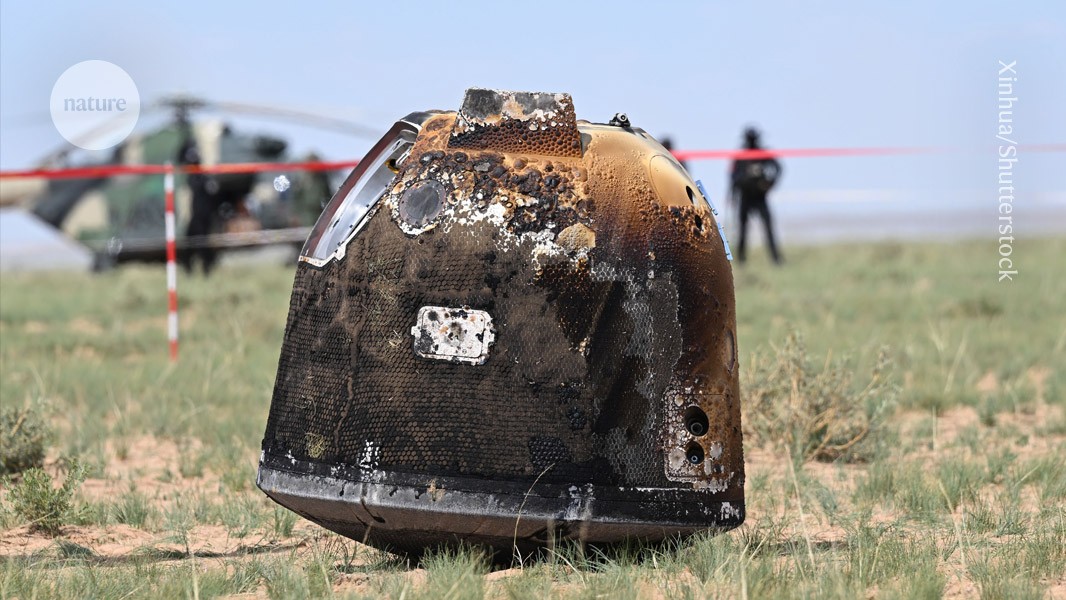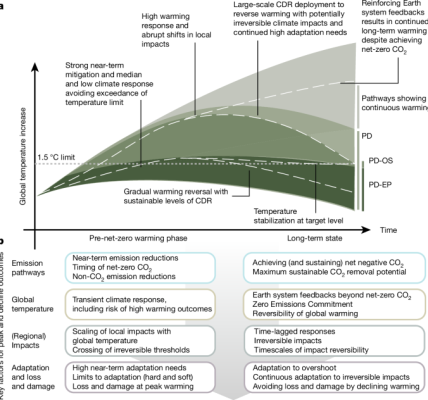Chang’e Soil Samples from the Moon’s Far Side: Arrival at Inner Mongolian and a Mission to Asteroid Craters
The first soil samples ever taken from the far side of the Moon arrived on Earth today. State media said that the Chang’e 6 spaceship was able to bring the cargo to Inner Mongolian at 2:07PM Beijing time.
The Moon’s far side is a point of interest for scientists, who might discover more about the early history of the Moon and Earth. It’s also a significant milestone in the escalating global space race to establish a presence on the Moon.
According to The Associated Press, the China National Space Administration was a landmark achievement in the country’s attempts at becoming a space and technological power.
The South Pole–Aitken Basin is a massive impact crater that likely formed some 4.26 billion years ago. The far side of the moon is pockmarked with craters from old accidents. How these craters formed and what materials they hold are important questions for piecing together the Moon’s history.
“This also has implications for understanding the origins of life on Earth,” the nonprofit The Planetary Society wrote in a post about Chang’e 6 earlier this year, citing a theory that asteroids might have carried water and organic materials to Earth during an event known as the Late Heavy Bombardment. More scrutiny has been given to how fierce that bombardment was. There are questions that could possibly be answered with samples from the far side of the Moon.
China is planning to send a spaceship to the Moon’s south pole in order to look for water and other resources that could support long-term missions on the Moon. NASA wants to send people to the lunar south pole region in a few decades.
International researchers are trying to work on Chang’e samples. The University of California, Davis, wants to use them to try and understand the timing of the ending of the moon’s magma ocean after the giant impact.
The landing procedure started at approximately 1:20 pm Beijing time on Tuesday. The capsule went off the ground to reduce its speed then went down at a rate of 9.2 kilometres a second. A parachute was used for the decent. The capsule was found by the recovery team after it landed. Once they have processed the capsule on site, it will be transported to Beijing, where it will be opened and the samples removed for scientific analysis and storage, says CNSA.
Patrick Pinet, a lunar geologist at the Research Institute in Astrophysics and Planetology (IRAP) in Toulouse, France, watched the mission unfold in real time from a control room in Beijing. “I’ve seen an incredible technical efficiency and professional mastering of all these very complex steps along the way,” he says.
Jonathan McDowell, astronomer at the Harvard–Smithsonian Center for Astrophysics in Cambridge, Massachusetts, says thatChina is able to carry out highly complex missions at lunar distance. There are technologies to take off, land, take off and rendezvous with a spaceship, which will be essential for a human lunar mission in the near future.
The meeting of more than 200 Chinese scientists from universities and research groups in Beijing was to discuss the scientific questions they hope to solve by analyzing the Chang’e-6 samples. Participants voted for three problems they considered the most important. The top question to explore is why the Moon’s two faces are so different, followed by what the composition of deeper lunar structures is and when the SPA basin formed.
The international instruments were carried to the moon. Among them was the European Space Agency’s Negative Ions at the Lunar Surface (NILS) detector and a French instrument called the Detection of Outgassing RadoN (DORN).
Pierre-Yves Meslin, a principal investigator of DORN at IRAP, says his team recorded 19 hours of good-quality data during the surface operations. The instrument’s performance has been met as a result of the work we are doing on the calibration and analysis of the scientific data. The Chinese and French members of the DORN team had great success and received a lot of support from various organizations. We were a part of the mission.
Space-Time Dependence of China’s Missions on Space and Time’s Edge: How Soon Will China Establish a Permanent Moon?
A space policy researcher at Arizona State University in Phoenix says China plans to establish a Moon base by the mid-2030s. She says that China will establish the first permanent presence on the Moon because they are able to execute their space missions on time.



